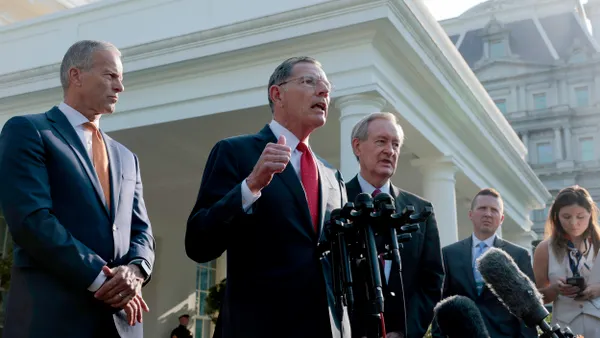Editor's Note: The following is a guest post from Ashok Gupta, senior energy economist at NRDC.
In the heart of the Midwest, Missouri's two biggest cities are joining the ranks of the country's top climate leaders. While coastal cities are typically in the spotlight for climate action, Kansas City and St. Louis are demonstrating what Heartland cities are capable of in the fight against climate change.
Both cities have adopted aggressive policies that will significantly reduce their carbon footprints. Kansas City recently adopted among the strongest standards for carbon reduction in the country, with goals to make municipal operations carbon neutral by 2030 and the entire city carbon neutral by 2040.
St. Louis made a similar pledge for carbon reductions as part of the American Cities Climate Challenge, a nationwide effort that provides cities with necessary resources to reach climate goals. St. Louis also recently became the fourth U.S. jurisdiction to pass a Buliding Energy Performance Standard (BEPS) ordinance that will create a path for deep cuts in emissions from buildings.
This ordinance is especially important for St. Louis, as buildings account for nearly 80% of the city's greenhouse gas (GHG) emissions, according to its latest GHG inventory. The emissions cut under the ordinance will lead to cleaner air, reduced pollution and improved public health with each energy efficiency upgrade.
Transitioning to clean energy can be part of securing a path to recovery for cities that are struggling with the current public health and economic situation. Missouri's clean energy economy has grown exponentially faster than the state's overall economy in previous years.
Smart clean energy policies at the city level foster growth in local jobs. Stronger building standards in St. Louis will help add to the estimated 42,000 jobs in the state's energy efficiency industry. Additionally, as jobs in traditional fossil-based energy continue to disappear, clean energy provides a sustainable alternative for rural communities throughout the state both in terms of jobs and a reliable source of tax revenue.
Kansas City's new carbon cutting standards will also have direct economic and health benefits to city residents. Being more energy efficient and switching to renewable energy in city buildings will save tax dollars that can then be used to fund other essential services.
The abundant and cheap clean power produced by the many wind farms in and around Missouri can also power homes and businesses, passing on the savings and health benefits to commercial tenants, renters and residents.
The urgency to transition to clean energy is not only in response to the economic downturn caused by the COVID-19 pandemic, but also in response to the climate crisis that is already affecting the region. The Midwest is not immune to the worst of climate change. Floods and disrupted farm yields will continue to get worse and cities can be an important part of the fight against climate change and building of more resilient communities.
When cities like St. Louis and Kansas City lead the way, other Midwest cities will take note and look to implement similar policies. As we turn a corner out of the pandemic, we have an opportunity to consider how we can create a stronger and more resilient economy.
Clean energy policies like the ones in Missouri's most populous cities will be a part of the state's economic recovery. Kansas City and St. Louis set ambitious standards that will continue to lead to more innovative ways of transitioning to cleaner, healthier and more economically vibrant and resilient cities. These two Heartland cities in a red state are choosing to lead and not be left behind by other climate leaders across the country.









